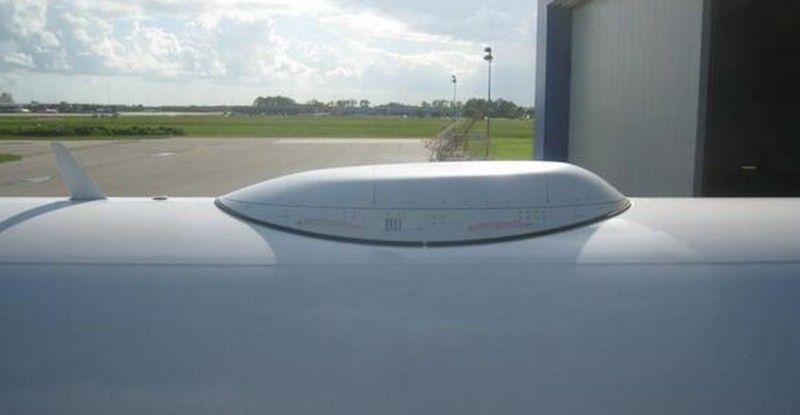On 23 January, RGN received a formal reply to outstanding questions concerning certification processes for radome antennae from a specialized FAA spokesperson dealing with these products. This spokesperson explained the regulations and the circumstances surrounding these approvals. Here is the unedited Q&A with the FAA.
Q: Is FAR Paragraph 25.571(e)(1), which calls for the 4 lb bird test, the applicable FAR for Radome Antennae?
A: Yes, Title 14, Code of Federal Regulations (14 CFR) 25.571(e)(1) contains the bird strike requirement applicable to large antenna radome installations.
Q: Have there been any recent changes to this FAR which might be qualified as making the test requirements “more stringent” than previously? If so, what were the reasons for that revision and can you send us a copy of the applicable revision documentation?
A: There have been no recent changes to § 25.571(e)(1). Section 25.571(e)(1) was last revised at Amendment 25-96, effective on March 31, 1998.
The Notice of Proposed Rulemaking (NPRM) for the rule change at Amendment 25-96 provides a history of the changes to the bird strike requirement in § 25.571(e)(1).
“Amendment 25-45 introduced a requirement in Sec. 25.571 (e)(1) that the aircraft structure must successfully withstand the impact of a four-pound bird at “likely operational speeds at altitudes up to 8,000 feet.” For clarity and consistency with other bird strike standards, this section was amended by Amendment 25-72 to refer to “VC at sea level.”
Since the adoption of Amendment 25-72, a manufacturer has attempted to circumvent the intent of the rule by proposing an unrealistically low VC at sea level. In order to ensure that the intended level of safety will be maintained, Sec. 25.571 (e)(1) would be amended further to specify ” VC at sea level or 0.85 VC at 8,000 feet, whichever is more critical.” (In terms of true airspeed, 0.85 VC at 8,000 feet is approximately equal to VC at sea level.)”
All historical rule text, NPRM, and preamble material can be found on the FAA Regulatory Guidance Library at: http://rgl.faa.gov – Amendment 25-91 (March 31, 1998); Amendment 25-72 (August 20, 1990); Amendment 25-45 (December 1, 1978).
Q: To your knowledge, is there a disparity between the FAR and JAR requirements applicable at present?
A: No, the requirement (bird size and impact speed) is the same for large antenna radome installations. The only difference in bird strike requirements between the FAA and EASA applies to the empennage structure only. The Joint Aviation Authorities (JAA) bird strike requirements are contained in Joint Aviation Requirements (JAR) Part 25, JAR 25.631. The current European Aviation Safety Agency (EASA) requirement is EASA Certification Specification (CS) 25.631 [Note: EASA CS 25.571(e)(1) references CS 25.631; “Bird impact as specified in CS 25.631”]. EASA CS 25.631 rule text:
“CS 25.631 Bird strike damage The aeroplane must be designed to assure capability of continued safe flight and landing of the aeroplane after impact with a 4 lb bird when the velocity of the aeroplane (relative to the bird along the aeroplane’s flight path) is equal to VC at sea-level or 0·85 VC at 2438 m (8000 ft), whichever is the more critical. Compliance may be shown by analysis only when based on tests carried out on sufficiently representative structures of similar design. (See AMC 25.631.)”
In April 11, 2012, European Aviation Safety Agency published a certification memorandum on compliance with CS-25 bird strike requirements. This certification memorandum (EASA CM-S-001) makes specific reference to large antenna installations.
Q: What might account for statements that there is a misinterpretation of the rules based on a lack of clarity of the requirements? Is there present documentation from the FAA, which would open up the rules to misinterpretation?
A: Section 25.571(e)(1) states the following:
“(e) Damage-tolerance (discrete source) evaluation. The airplane must be capable of successfully completing a flight during which likely structural damage occurs as a result of–
(1) Impact with a 4-pound bird when the velocity of the airplane relative to the bird along the airplane’s flight path is equal to VC at sea level or 0.85 VC at 8,000 feet, whichever is more critical;
The damaged structure must be able to withstand the static loads (considered as ultimate loads) which are reasonably expected to occur on the flight. Dynamic effects on these static loads need not be considered. Corrective action to be taken by the pilot following the incident, such as limiting maneuvers, avoiding turbulence, and reducing speed, must be considered. If significant changes in structural stiffness or geometry, or both, follow from a structural failure or partial failure, the effect on damage tolerance must be further investigated.”
Title 14, Code of Federal Regulations 91.117 states, “unless otherwise authorized by the Administrator, no person may operate an aircraft below 10,000 feet MSL at an indicated airspeed of more than 250 knots (288 m.p.h).”
Since the bird strike requirements in § 25.571(e)(1) require consideration of bird strikes from sea level to 8,000 feet, some applicants have interpreted § 91.117 as limiting the bird speeds required for consideration under § 25.571(e)(1) to 250 knots. The FAA specifically references airplane design speed, VC, in the rule to avoid confusion between § 25.571(e)(1) and the operational requirements in 14 CFR part 91. Further, the FAA clearly states in the preamble to the rule, §25.571(e)(1) at Amendment 25-72 (August 20, 1990), that the operational rule in 14 CFR part 91 does not apply to the bird strike requirements in § 25.571(e)(1).
INTERVIEW ENDS











